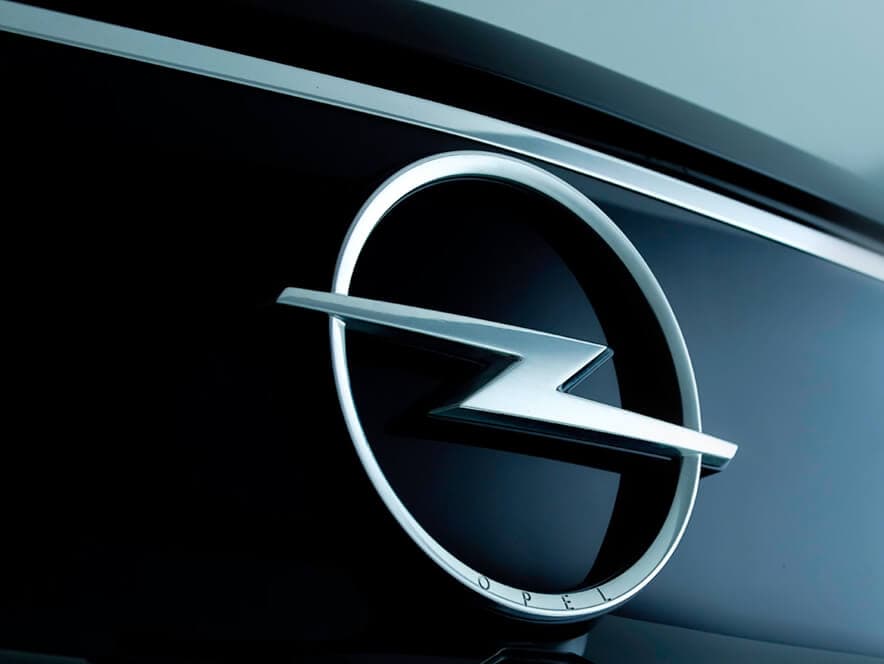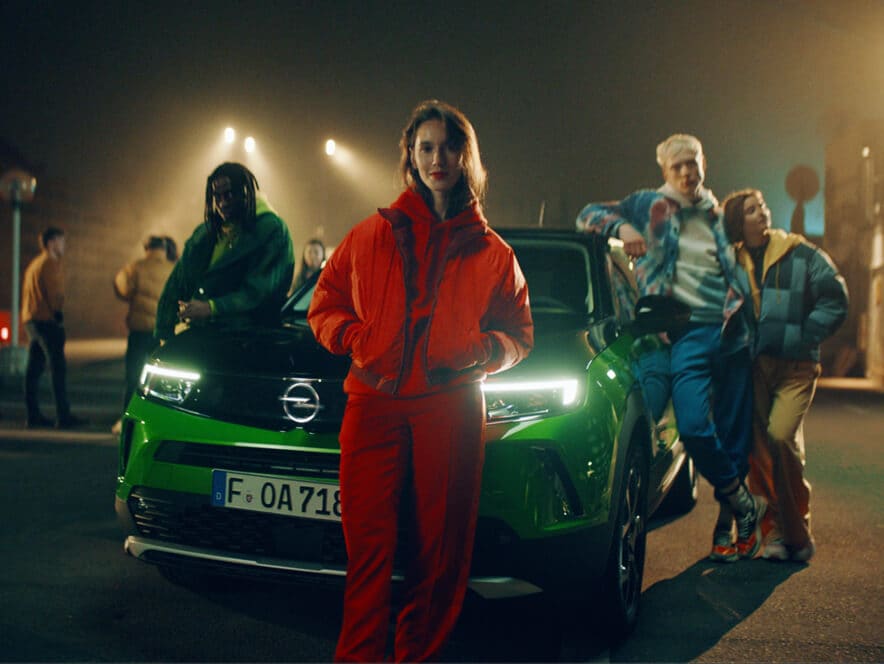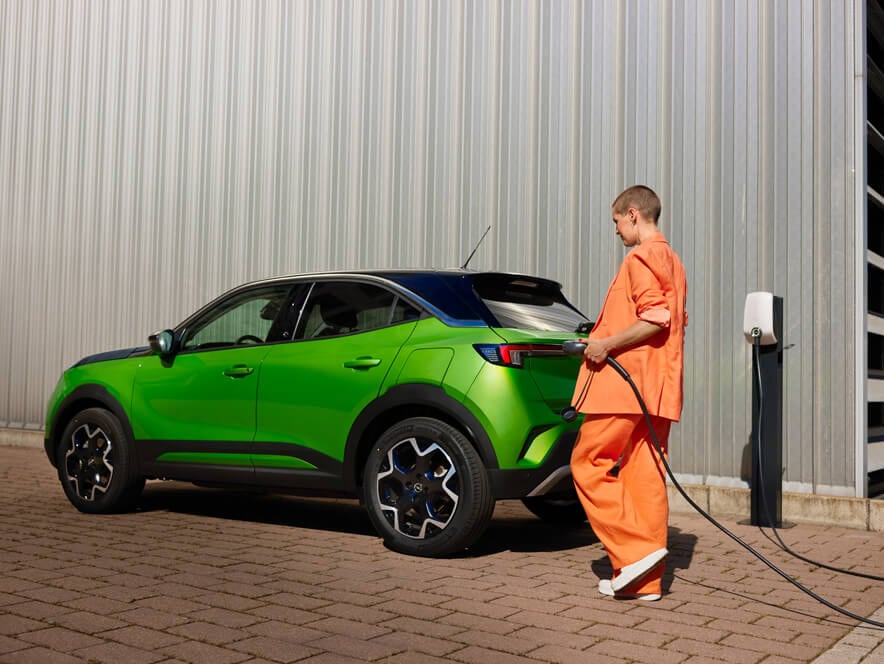THE ADVANTAGES OF LITHIUM-ION BATTERIES.
Small, compact, powerful.
Lithium-ion batteries are the heart of our electric vehicles. They are particularly powerful and have the highest energy density compared to other batteries. This means that they can store the most energy per kilogram of battery. Lithium-ion batteries have numerous advantages: due to their compact size, more individual lithium-ion batteries fit in your Opel electric vehicle. So you can travel further. They also require less energy to cool the vehicle battery to its optimal operating temperature.
Also good to know: our batteries are not affected by the so-called “memory effect”. You can recharge your electric vehicle battery as often as you like—even through mobile fast charging—without any loss of performance.
LIFECYCLE OF A BATTERY.
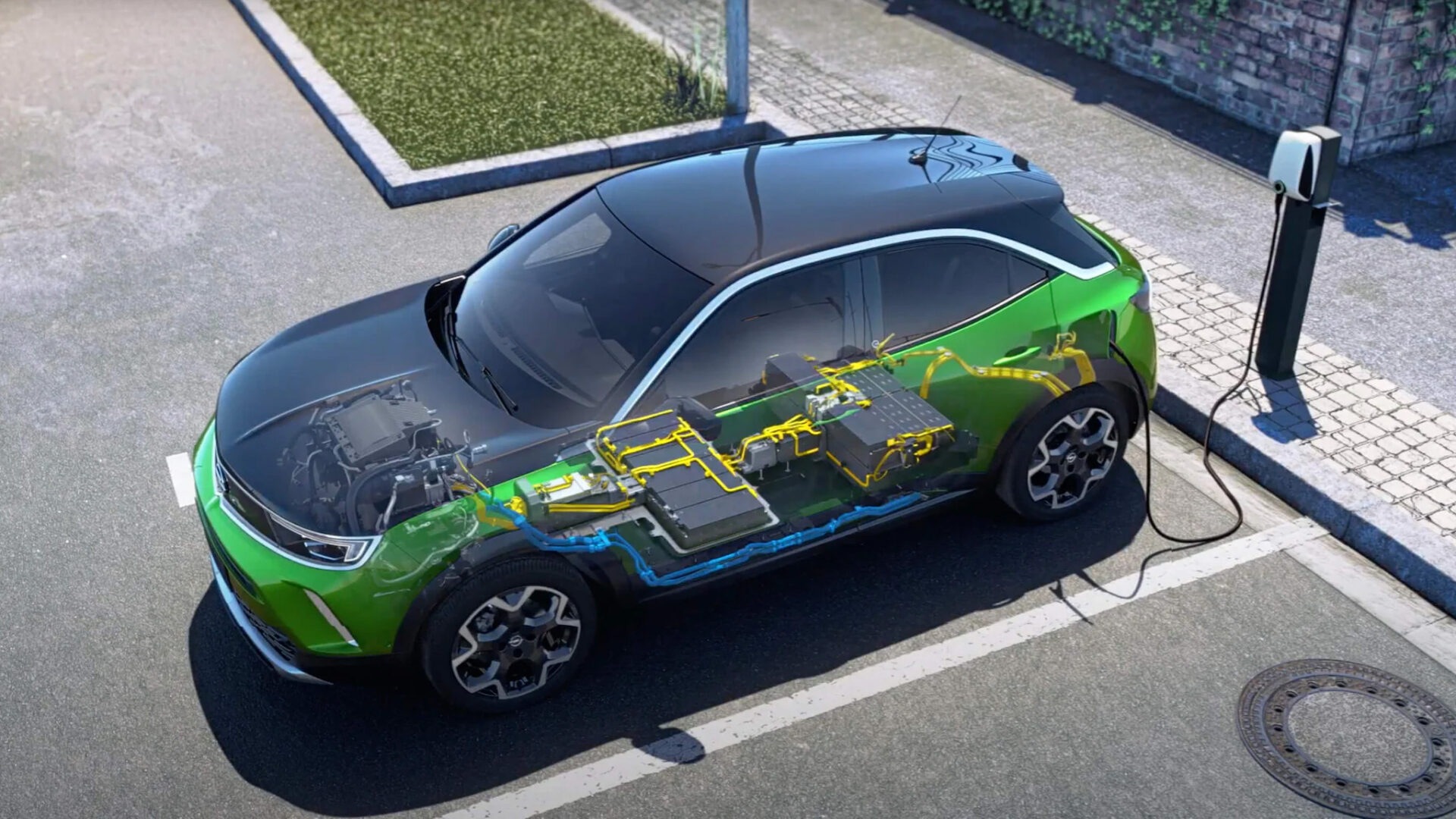
LIFESPAN OF LITHIUM-ION-BATTERIES
Independent studies estimate that you can drive 250,000, even up to 500,000 km with the battery of an electric vehicle1. The durability of our batteries is therefore probably on a par with that of our combustion engines. That’s why we give an 8-year guarantee on our electric vehicle batteries, or 160,000 km of driving. Should there be a reason for complaint, your vehicle will be ready for use again in no time at all. Your Opel partner can easily replace a lithium-ion battery.
1 The average value applied in this study assumes a service life of 250,000 km.
CHARGING CYCLES
There are many ways to charge your Opel electric vehicle. At a public fast charging station1, it can be charged up to 80% within 30 minutes. With the numerous other charging solutions, you can determine charging cycles individually—choose between the single or three-phase wallbox (7.4 or 11 kW).
1 Theoretical value calculated on the basis of 337 km WLTP range. At a DC charging station (100 kW). Corresponds to charging an empty battery. The charging time may vary depending on the type and power of the charging station, the outside temperature and the battery temperature.
CAPACITY
To be really precise, each electric vehicle has two batteries: one that’s responsible for the drive and an additional 12-volt battery responsible for starting, central locking, interior lights, and instruments—just like any combustion engine. The energy of the 12-volt battery keeps the vehicle operational even after about six weeks of standstill.
PRODUCTION COSTS OF BATTERIES
The manufacturing costs of lithium-ion batteries have fallen sharply in recent years. While the price was still 600 Euros per kilowatt-hour in 2010, a price reduction to around 83 Euros per kilowatt-hour is forecast by 20251. This is one of the reasons why our electric vehicles have also become more affordable in recent years. In combination with the environmental bonus, you currently benefit from a price that is comparable to that of an Opel with an internal combustion engine.
1 Developments on lithium-ion battery prices.
MAINTENANCE, REPLACEMENT, AND WARRANTY.
BATTERY MAINTENANCE
When your electric vehicle is serviced by your Opel Partner, they check the battery, the charging connection, the chargers and all cable connections. So you don’t have to take care of the battery maintenance yourself.
Important for you: You will be provided with an official battery certificate confirming the maximum capacity of the battery. This certificate is an integral part of the resale value of your vehicle.
BATTERY WARRANTY
Our electric vehicles come with a battery guarantee of 8 years or 160,000 km—for at least 70% of the original charge capacity after this time or distance. The battery certificate is completed at every inspection. So you get a good price when you want to sell your electric vehicle later on.
BATTERIES AND SUSTAINABILITY.

BATTERY RECYCLING
After eight to twelve years of use, batteries can only be charged to 70–80%. They are then replaced and the old batteries are prepared for a second life. Second life can mean several things, for example, reconditioned electric vehicle batteries that store electricity from voltaic systems and feed it back into the grid when needed.
The batteries are only recycled after their second life. Alternatively, many of the discarded batteries can be connected together to form a kind of block battery to act as buffer storage for wind power and solar parks.
SUSTAINABILITY
At Opel, sustainability begins with the procurement of raw materials and production. Compliance with all environmental standards is a matter of course for us. Through high-quality production, handling tips and regular maintenance, we ensure a long battery lifespan.
We recondition used electric vehicle batteries as often as possible to keep our ecological carbon footprint to a minimum. At the end of their first life cycle, the batteries are reconditioned so that they can be used a second time. Only then do we take care of efficient recycling of the raw materials. You see, at Opel we do everything we can to keep the environmental impact of electric batteries as low as possible.
BATTERY DISPOSAL
You don’t have to worry about the disposal of your electric vehicle battery. Because we always test the battery’s capacity during regular maintenance, we have an accurate view of when it is time to replace, or even dispose of, the battery.
TECHNOLOGY.
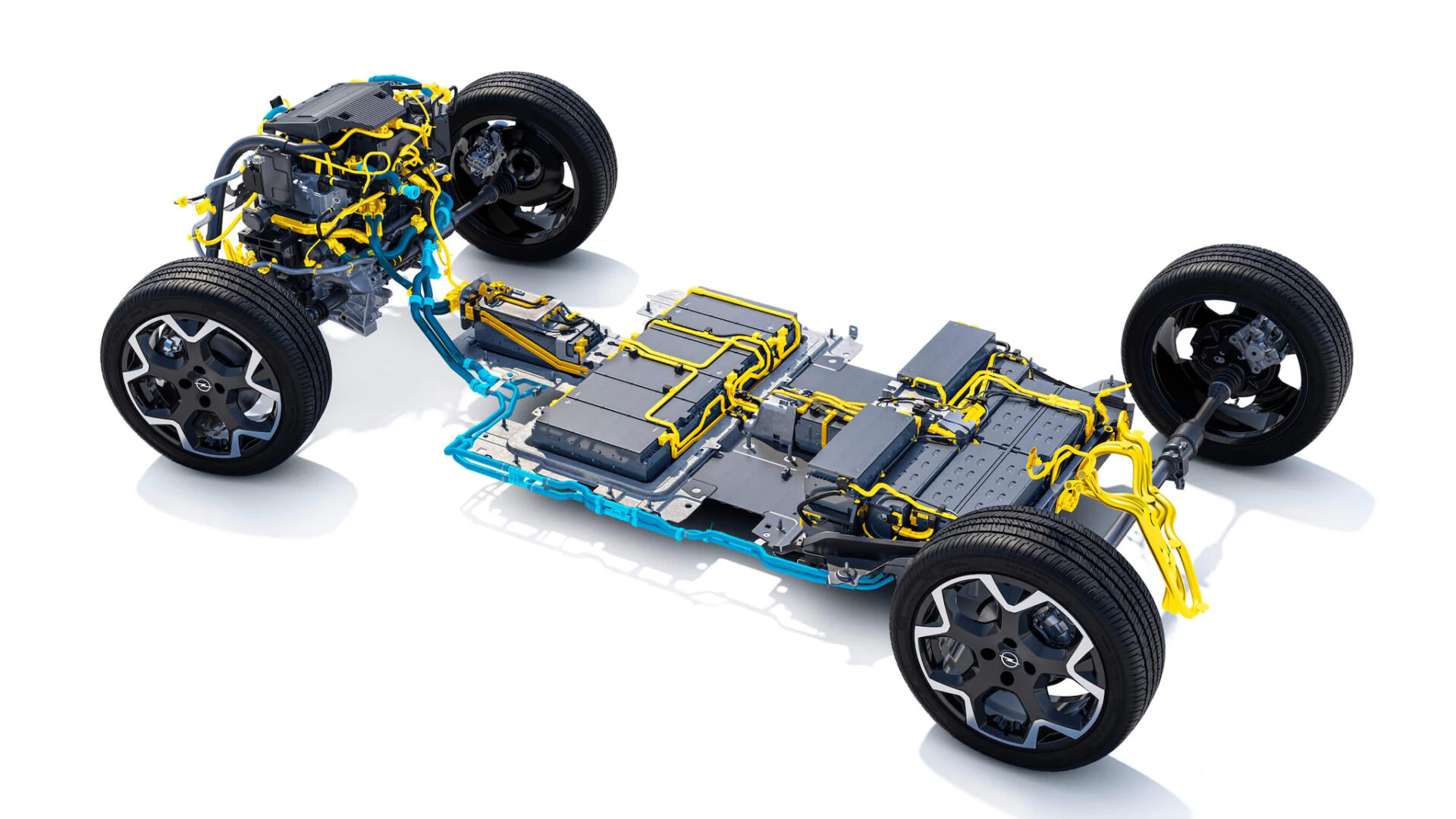
MANUFACTURING
For their production, electric vehicles need more technology metals than other vehicles. Lithium and cobalt in particular are important raw materials for the batteries. That is why we are working to reduce the demand for raw materials—through production advances, greater material efficiency, and last but not least, increased recycling.
COMPONENTS AND PROPERTIES
Lithium has the highest electrochemical potential of all metals, which is why lithium-ion batteries offer by far the highest energy density of all metal-air systems. This has numerous advantages for the electric vehicle, because the higher the energy density, the lighter the battery—with the same amount of stored energy.
An electric battery weighs between 200 and 700 kg. The amount of energy density therefore has a direct influence on handling and consumption. By the way: the gravimetric energy density is given in kilowatt hours per kilogram (kWh/kg).
DEVELOPMENT
In order to make us less dependent on suppliers in the future, a Gigafactory is being built at our engine and components plant in Kaiserslautern: the largest battery production plant in Germany. Together with a plant in northern France, we will produce one million batteries a year here from 2024.
USEFUL INFORMATION ABOUT ELECTRIC VEHICLE BATTERIES.
WHICH BATTERIES ARE USED IN ELECTRIC VEHICLES?
Lithium-ion batteries are installed in our electric vehicles. Our declared goal is to produce high-quality and at the same time affordable batteries. We also pay special attention to the sustainability factor. Compared to conventional production, we will install batteries with a lower CO2 footprint in our Gigafactory.
HOW MUCH DOES AN ELECTRIC VEHICLE BATTERY COST?
Despite constantly falling costs, the battery is still the most expensive component of an electric vehicle. The production costs of our batteries are around €6,000. Nevertheless, in combination with the environmental benefits, attractive financial incentives, and lower maintenance costs an electric vehicle really is an affordable option.
HOW LONG DOES AN ELECTRIC VEHICLE BATTERY LAST?
Lithium-ion batteries have a service life of about 8–12 years. In that time, around 1,500 to 2,500 charging cycles can be expected. The capacity decreases with age to 70 to 80 percent of the original value. This depends on the charging method, the number of charging cycles and also the driving style. Opel gives a battery guarantee of 8 years or at least 160,000 km.
HOW ARE BATTERIES DISPOSED OF?
Electric vehicle batteries lose charging capacity over time but that doesn’t mean they become unusable. At Opel, we give every battery a “second life”. They are only recycled once that’s over.
NOT FOUND THE RIGHT INFO YET?
ELECTRIC VEHICLE MODELS
Opel Electric Passenger Cars, SUVs, MPVs, and Commercial Vans. E‑mobility made easy. Choose your e‑model and set off on your zero‑emissions journey.
ELECTRIC VEHICLE BENEFITS AND INCENTIVES
Electric vehicles—whether as private, company, or commercial use—offer financial advantages. They don’t have a negative impact on CO2 emissions or the climate, they require little maintenance, and use resources more efficiently—indeed they can be powered using renewable energy. Just a few of the many reasons why we believe our future is electric.
ELECTRIC VEHICLE CHARGING AND DRIVING RANGE
There’s a wide range of charging options that you can use to charge on the road or at home. With our information, charging your vehicle will be as easy as charging your smartphone.
WHAT’S NEXT?
Discover how much you can save by requesting for a vehicle trade-in quotation. You also have the option to arrange an appointment for a test drive at your convenience. If you have any questions about our Electric Vehicle range, a dedicated Opel advisor can be easily reached to provide you with personal guidance. We appreciate your interest and are happy to help.

